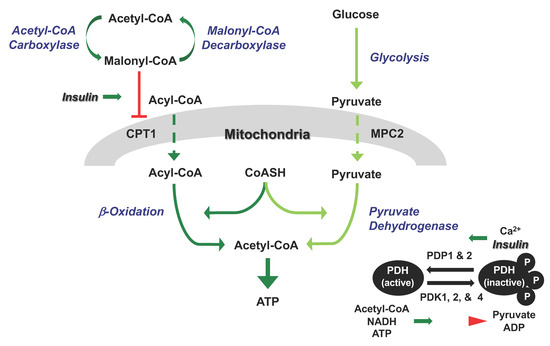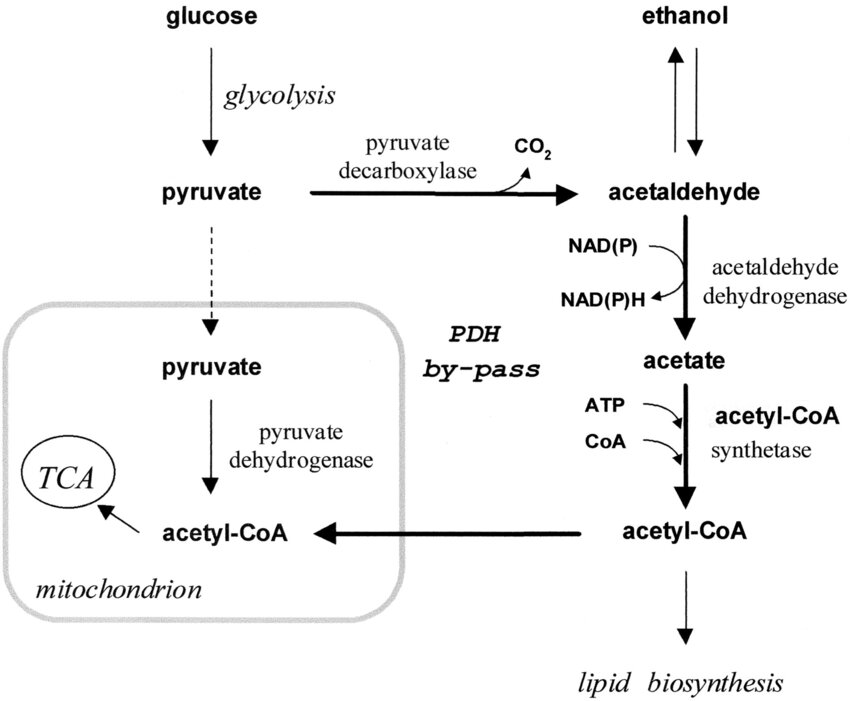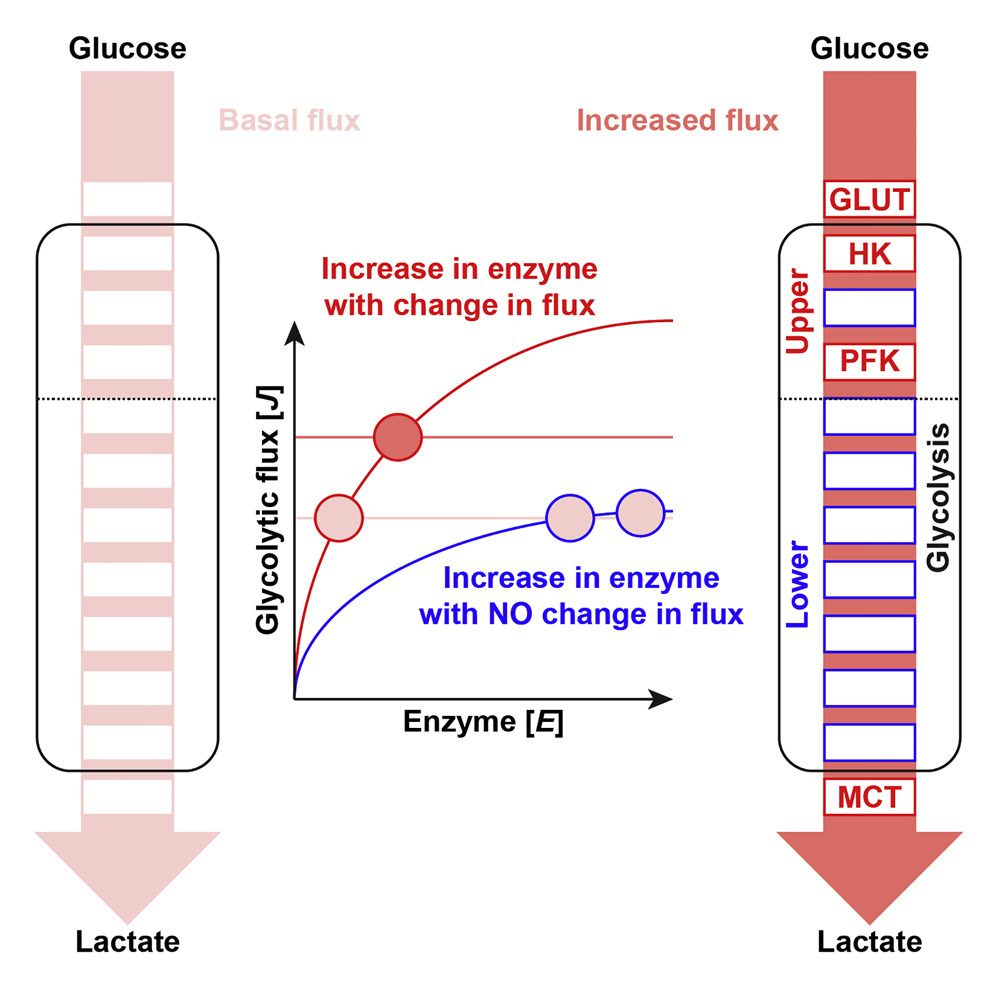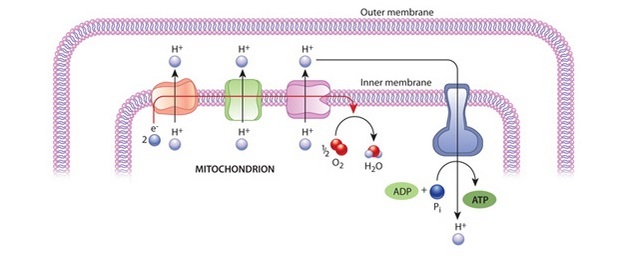Saint
HTN by 2026
- Joined
- Sep 15, 2025
- Posts
- 3,491
- Reputation
- 6,539
You ever feel like you’re “doing everything right” — clean diet, solid training — but you still look flat, soft, or can’t lose that last bit of fat?
You might be stuck in a metabolic gridlock called the Randle Cycle (aka the Glucose–Fatty Acid Cycle).
Discovered by Philip Randle in 1963, it describes how fatty acid oxidation and glucose oxidation compete for energy production inside your cells — especially in muscle and liver tissue.
 In healthy metabolism: you switch easily — burning fat at rest, carbs during workouts.
In healthy metabolism: you switch easily — burning fat at rest, carbs during workouts.
That’s called metabolic flexibility.
 In the Randle-dominant state: your body gets stuck burning one fuel and blocks the other.
In the Randle-dominant state: your body gets stuck burning one fuel and blocks the other.
That’s metabolic inflexibility — bad for energy, performance, and aesthetics.
When plasma free fatty acids (FFA) rise (from dietary fat or adipose tissue release):
FFAs enter mitochondria for β-oxidation → ↑ Acetyl-CoA + ↑ NADH
These inhibit pyruvate dehydrogenase (PDH), the enzyme that converts glucose → acetyl-CoA.
So your muscles stop oxidizing glucose.
Glucose builds up → blood sugar rises → insulin spikes.

Now insulin’s job is to push that glucose somewhere — ideally into muscle for glycogen.
But your muscle cells are already busy burning fat, and PDH is blocked.
So the glucose goes into fat storage.
You literally end up burning fat and storing fat at the same time — inefficient and physique-wrecking.

It works the other way too.
If you eat a carb-heavy meal → high glucose → high insulin → lipolysis (fat breakdown) is suppressed. So fat burning shuts down while glucose dominates.

When free fatty acids dominate mitochondrial oxidation, pyruvate dehydrogenase (PDH) is inhibited, reducing glucose-derived acetyl-CoA formation. This suppresses glycolytic flux and glucose oxidation, leading to elevated plasma glucose and compensatory hyperinsulinemia.

The muscle’s inability to utilize glucose efficiently reduces glycogen synthesis, which directly affects muscle volume and intramuscular hydration — two key factors in the “full” aesthetic appearance.
Chronic activation of the Randle Cycle leads to:

From a performance perspective, this has real consequences. Reduced PDH activity lowers carbohydrate oxidation rates during training, limiting glycolytic ATP generation. The result: decreased training intensity, slower recovery, and reduced glycogen resynthesis post-exercise.
Metabolically, your muscles lose their flexibility — the ability to switch between lipid and glucose oxidation according to demand. In aesthetic terms, this makes it harder to achieve both leanness and fullness simultaneously.
To counter this, your goal should be to restore metabolic flexibility — the capacity of skeletal muscle to respond to nutrient and energetic states dynamically.
Exercise is the most potent modulator. Resistance training and high-intensity intervals activate AMPK and PGC-1α, both of which increase mitochondrial biogenesis and enhance glucose uptake through insulin-independent GLUT4 translocation.

Nutritional periodization reinforces this effect: cycling between high-carbohydrate and low-fat meals around training and higher-fat, low-carbohydrate meals during rest periods minimizes substrate competition at the mitochondrial level.
To maintain this state: train frequently, manage energy balance, and avoid chronic nutrient overlap that drives futile substrate cycling. The aesthetic physique depends on how efficiently your mitochondria translate nutrient intake into ATP — not triglycerides.

The Randle Cycle teaches one truth: you don’t just look how you eat; you look how your mitochondria burn what you eat.
@Framem4xx @kababcel @CertifiedGoy @Helvetier @slavsmog @202 @iblamexyz
You might be stuck in a metabolic gridlock called the Randle Cycle (aka the Glucose–Fatty Acid Cycle).
Discovered by Philip Randle in 1963, it describes how fatty acid oxidation and glucose oxidation compete for energy production inside your cells — especially in muscle and liver tissue.
 In healthy metabolism: you switch easily — burning fat at rest, carbs during workouts.
In healthy metabolism: you switch easily — burning fat at rest, carbs during workouts.That’s called metabolic flexibility.
 In the Randle-dominant state: your body gets stuck burning one fuel and blocks the other.
In the Randle-dominant state: your body gets stuck burning one fuel and blocks the other.That’s metabolic inflexibility — bad for energy, performance, and aesthetics.
When plasma free fatty acids (FFA) rise (from dietary fat or adipose tissue release):
FFAs enter mitochondria for β-oxidation → ↑ Acetyl-CoA + ↑ NADH
These inhibit pyruvate dehydrogenase (PDH), the enzyme that converts glucose → acetyl-CoA.
So your muscles stop oxidizing glucose.
Glucose builds up → blood sugar rises → insulin spikes.

Now insulin’s job is to push that glucose somewhere — ideally into muscle for glycogen.
But your muscle cells are already busy burning fat, and PDH is blocked.
So the glucose goes into fat storage.
You literally end up burning fat and storing fat at the same time — inefficient and physique-wrecking.

It works the other way too.
If you eat a carb-heavy meal → high glucose → high insulin → lipolysis (fat breakdown) is suppressed. So fat burning shuts down while glucose dominates.

When free fatty acids dominate mitochondrial oxidation, pyruvate dehydrogenase (PDH) is inhibited, reducing glucose-derived acetyl-CoA formation. This suppresses glycolytic flux and glucose oxidation, leading to elevated plasma glucose and compensatory hyperinsulinemia.

The muscle’s inability to utilize glucose efficiently reduces glycogen synthesis, which directly affects muscle volume and intramuscular hydration — two key factors in the “full” aesthetic appearance.
Chronic activation of the Randle Cycle leads to:
- Mitochondrial dysfunction
- Insulin resistance
- Elevated fasting glucose & triglycerides
- Inflammation and oxidative stress

From a performance perspective, this has real consequences. Reduced PDH activity lowers carbohydrate oxidation rates during training, limiting glycolytic ATP generation. The result: decreased training intensity, slower recovery, and reduced glycogen resynthesis post-exercise.
Metabolically, your muscles lose their flexibility — the ability to switch between lipid and glucose oxidation according to demand. In aesthetic terms, this makes it harder to achieve both leanness and fullness simultaneously.
To counter this, your goal should be to restore metabolic flexibility — the capacity of skeletal muscle to respond to nutrient and energetic states dynamically.
Exercise is the most potent modulator. Resistance training and high-intensity intervals activate AMPK and PGC-1α, both of which increase mitochondrial biogenesis and enhance glucose uptake through insulin-independent GLUT4 translocation.

Nutritional periodization reinforces this effect: cycling between high-carbohydrate and low-fat meals around training and higher-fat, low-carbohydrate meals during rest periods minimizes substrate competition at the mitochondrial level.
To maintain this state: train frequently, manage energy balance, and avoid chronic nutrient overlap that drives futile substrate cycling. The aesthetic physique depends on how efficiently your mitochondria translate nutrient intake into ATP — not triglycerides.

The Randle Cycle teaches one truth: you don’t just look how you eat; you look how your mitochondria burn what you eat.
@Framem4xx @kababcel @CertifiedGoy @Helvetier @slavsmog @202 @iblamexyz






